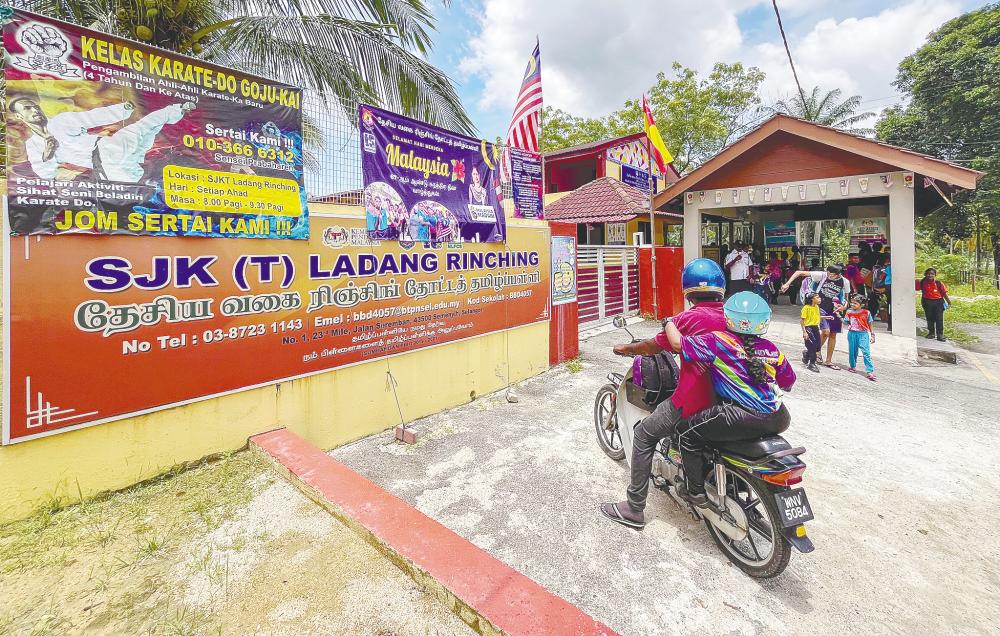PETALING JAYA: The government has been urged to develop a comprehensive master plan for the relocation of Tamil schools that have a low enrolment of less than 30 pupils each.
Centre For Vernacular School Excellence director Arun Dorasamy said without such a plan, these schools may be gradually phased out.
Recently, it was reported that SJK(T) Bukit Fraser in Pahang, which was left with only one pupil, would stop operating next year.
“This is not the first time such cases have occurred,” he said.
“Urban areas with high-density Indian population do not have enough (Tamil) schools to cater to their needs, while rural areas do not have an Indian population to support the schools there.
“This is why Indian parents are sending their children to national schools,” he said.
Arun stressed that while 89% of the Indian population live in urban areas, 67% of Tamil schools are still located in rural areas.
He said the lower enrolment in Tamil schools is not due to poor performance or lack of interest from the Indian community. The problem lies in the schools’ locations.
“Up till September this year, there are only 529 SJK(T) schools in the country. These include schools that are not operating,” he said, adding that there are 138 Tamil schools with less than 30 pupils and 21 schools with only 10.
Perak has the highest number of low-enrolment Tamil schools, with 43 having fewer than 30 pupils, followed by Kedah with 23 schools and Johor with 22, he added.
“This highlights the pressing need to address the issue of low enrolment and consider solutions such as the relocation of these schools to more populated areas,”
he said.
Arun, who is involved in research and compiling statistics on Tamil schools and has visited 38 of them this year, highlighted a paradox in the development of Tamil schools.
He said while the number of Tamil schools has increased from 523 in 2013 to 529 today, enrolment has dropped by nearly 15% over the same period.
“This is also because of issues such as the government’s introduction of the Dual Language Programme (DLP) which has been quite popular among Tamil schools, with Mathematics and Science being taught in English and Tamil.
“Unfortunately, only 67 Tamil schools were allowed to run the programme and almost 100 are still requesting.
“Most parents want the DLP programme in all schools.”
Arun said if all the Tamil schools in the country are allowed to run the DLP, the enrolment of pupils would undoubtedly surpass the 100,000 mark.
Urging for collaboration between the federal and state governments on the matter, Arun said the Education Ministry needs to focus on creating an express framework for the relocation of the schools.
“This effort is crucial to ensure that Tamil schools are moved to areas with higher demand, helping to sustain enrolment and support the schools’ long-term viability.”
Arun said under-enrolled schools struggle to provide a vibrant and engaging environment for pupils, as the lack of peers affects the students’ overall experience.
He added that with fewer classmates, children would miss out on the opportunity to build friendships, engage in group activities, and experience the social aspects of school life that contribute to their emotional and social development.
“This can lead to a less dynamic and stimulating learning atmosphere, where pupils may feel isolated and miss out on the fun, interactive aspects of education that are crucial for fostering a
well-rounded, healthy childhood experience,” he said.
Arun stressed that the performances of pupils at Tamil schools are definitely better if compared with Indian pupils at national schools and Chinese schools.









